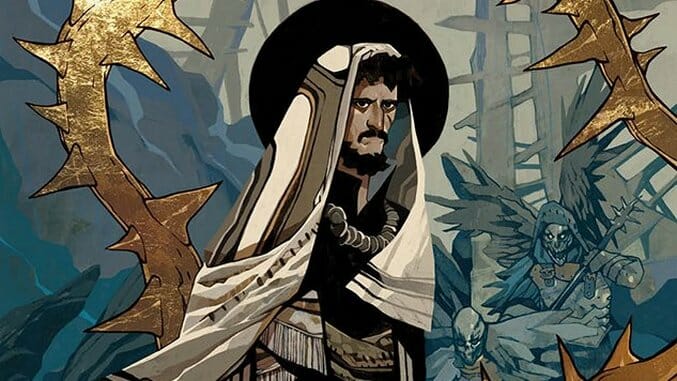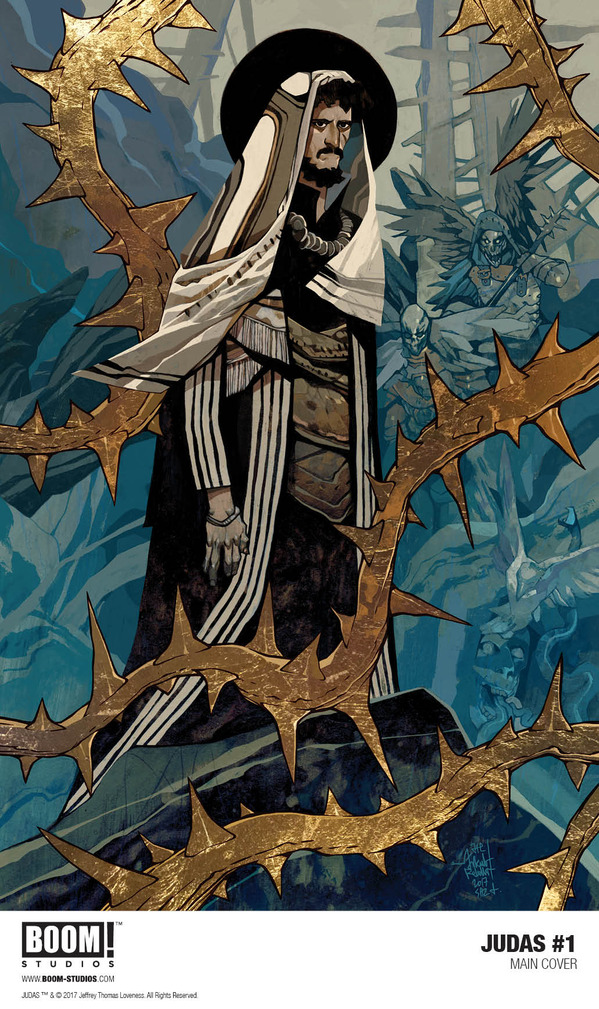Exclusive: BOOM!’s Judas Miniseries Explores the Aftermath of History’s Greatest Blasphemer
Creators Jeff Loveness & Jakub Rebelka Put Judas Iscariot Through Hell & Back in “Bible Fan Fiction"

Taken on purely literary merits, the Christian Bible flaunts a staggering number of complex characters worthy of further exploration. Ironically, though, the most intriguing figures often fail the moral doctrine of their source material. Need proof? Phillip Pullman unpacked the deception of Eve in his lauded fantasy trilogy, His Dark Materials, Henry Rollins played a modern-day Cain in the 2015 horror flick He Never Died and Satan has continually snagged starring roles ranging from John Milton’s narrative poetry to primetime cop dramas on Fox—much to the chagrin of old conservative dudes calling themselves a million moms.
What makes these archetypal sinners so worthy of our fascination? They’re certainly more relatable, but they also tend to offer a more layered look into morality—spectrums of bittersweet grey more than binary black and white. And Judas Iscariot embraces that ambiguity more than any of his nefarious peers. The apostle is largely condemned for betraying Jesus Christ to the Romans, but without the Judas kiss—predicted by Christ at the Last Supper—the crucifixion and moral salvation of humanity within the Christian faith could never have occurred. Whether Judas is religion’s biggest narc or a celestial domino is a question that remains even after non-canonical gospels have suggested the latter.
Exclusively announced today, writer Jeff Loveness and artist Jakub Rebelka will tackle that question in a gorgeous four-issue comic miniseries published by BOOM! Studios, set to start this December. The period piece picks right up where the Good Book left off, witnessing the titular character wake up in Hell after committing suicide. The project offers a new direction for Loveness, who honed his writing chops in comedy institutions including The Onion and Jimmy Kimmel Live! as well as Marvel superheroe titles like Nova and Groot. Polish artist Rebelka recently wrapped the reality-bending odyssey Namesake with writer Steve Orlando, merging chiseled figures against striking, surrealist world-building.
-

-

-

-

-

-

-

-

-

-

-

-

-

-

-

-

-

-

-

-

-

-

-

-

-

-

-

-

-

-

-

-

-

-

-

-

-

-

-

-









































